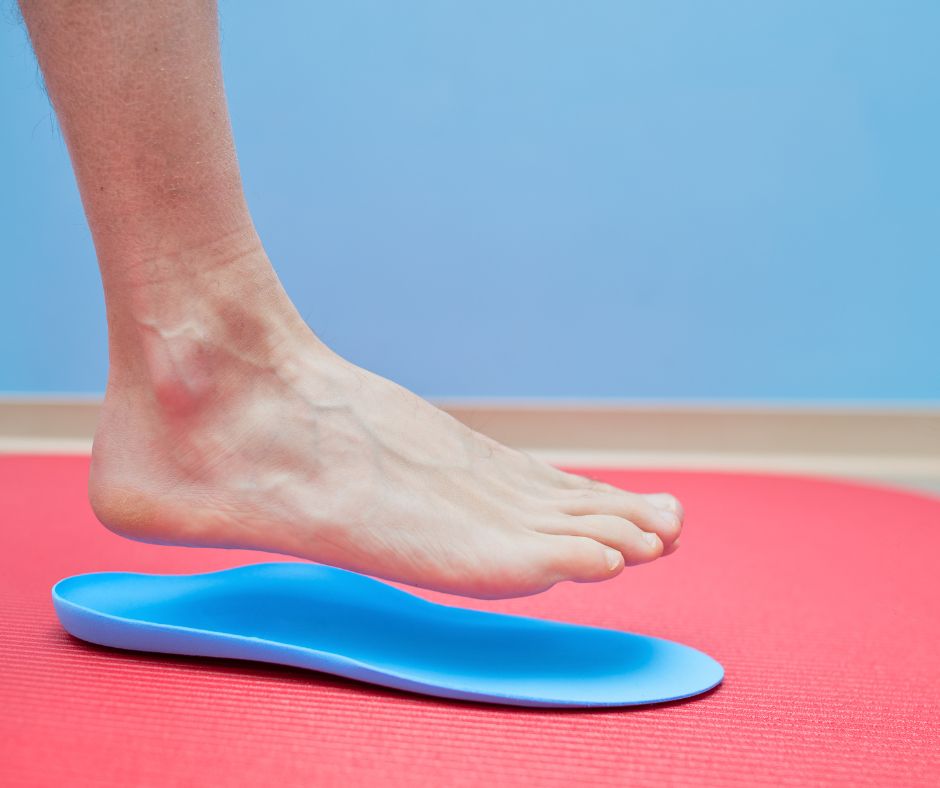The structure of the foot
The human foot is made up of 26 bones, 33 joints, and more than 100 muscles, tendons, and ligaments. It is divided into three parts: the hindfoot, the midfoot, and the forefoot. The hindfoot is made up of the heel bone (calcaneus) and the ankle bone (talus).
The midfoot is made up of the arch bones (navicular, cuboid, and cuneiforms) and the ball of the foot (metatarsals). The forefoot is made up of the toes (phalanges). The arch of the foot is supported by a complex network of muscles, tendons, and ligaments, which work together to provide stability and support during movement.
Types of pathologies
There are many different types of foot pathologies, or conditions that can affect the feet.
At our Physiotherapy clinics located in Cork and Kanturk patients present with different foot pathologies.
Some common examples include:
- Plantar fasciitis: inflammation of the plantar fascia, the connective tissue that runs along the bottom of the foot from the heel to the toes. It is a common cause of heel pain.
- Bunions: a bony bump that develops on the joint at the base of the big toe.
- Hammertoes: a deformity of the toe in which the middle joint of the toe is bent, causing the toe to resemble a hammer.
- Flat feet: a condition in which the arch of the foot collapses, causing the entire sole of the foot to come into contact with the ground.Neuromas: benign growths of nerve tissue that can develop in the foot, often between the third and fourth toes.
- Heel spurs: bony growths that can develop on the heel bone, often as a result of plantar fasciitis.
- Tarsal Tunnel Syndrome: a condition caused by the compression of the posterior tibial nerve as it passes through the tarsal tunnel on the inside of the ankle.
- Achilles tendonitis: inflammation of the Achilles tendon, the large tendon that connects the calf muscle to the heel bone.
These are just some examples of the many different types of foot pathologies that can occur. Treatment for these conditions will depend on the specific condition and the severity of the symptoms.

Benefits of orthotics
Orthotics are custom-made or prefabricated inserts that can be placed inside shoes to support and align the foot and ankle. There are many potential benefits of orthotics, including:
- Pain relief: Orthotics can help to redistribute weight and pressure away from sore or injured areas of the foot, providing relief from pain and discomfort.
- Improved alignment: Orthotics can help to realign the bones and joints of the foot, which can improve posture and gait and reduce the risk of further injuries.
- Increased stability: Orthotics can help to provide additional support and stability for the foot and ankle, which can be especially beneficial for people with conditions such as flat feet or high arches.
- Enhanced performance: Orthotics can help to optimise the function of the foot and ankle, which can improve athletic performance and reduce the risk of injury during physical activity.
- Reduced risk of injury: By improving the alignment, stability and support of the foot, orthotics can help to reduce the risk of injuries such as sprains, strains, and stress fractures.
It is important to note that orthotics are not a one-size-fits-all solution and their effectiveness may vary depending on the individual’s condition and the type of orthotics used.
At Bishopstown and Kanturk Physiotherapy Clinics, we use OHI TOG GaitScan™ analysis in conjunction with our detailed foot assessment and years of experience and knowledge to detect abnormal foot function.
Please click onto our website to see how TOG Gaitscan works.
OHI international
OHI International is a global company that specialises in the manufacturing and distribution of orthotics and orthopaedic products. It was founded in 1984, based in the United States. They offer a wide range of products, including:
Custom-made orthotics: These are inserts that are made from a mould of the individual’s feet and are designed to provide support and alignment to the feet and lower legs.
- Prefabricated orthotics: These are pre-made inserts that can be modified to fit the individual’s feet and provide support and alignment.
- Custom made orthotics help to alleviate pain, improve alignment, and increase stability in individuals with various foot and ankle conditions. They are custom-made to the individual’s foot and ankle shape, providing the best possible fit and maximum effectiveness.
Plantar fasciitis is a common cause of heel pain, characterized by inflammation of the plantar fascia, a thick band of tissue that runs along the sole of the foot and helps support the arch. Symptoms include sharp pain in the heel or the bottom of the foot, especially when walking or standing for long periods of time. Treatment typically involves a combination of rest, stretching and physical therapy, orthotics, pain relief medication, and in severe cases, corticosteroid injections or surgery.


